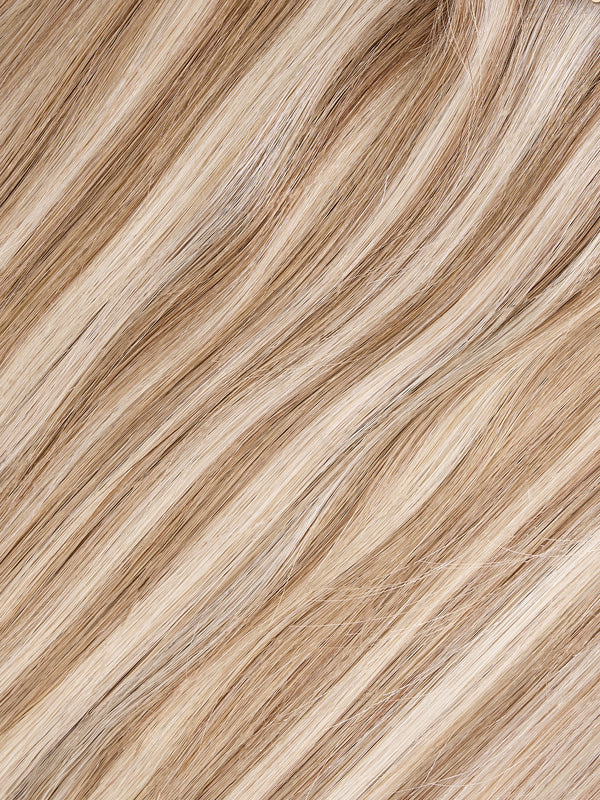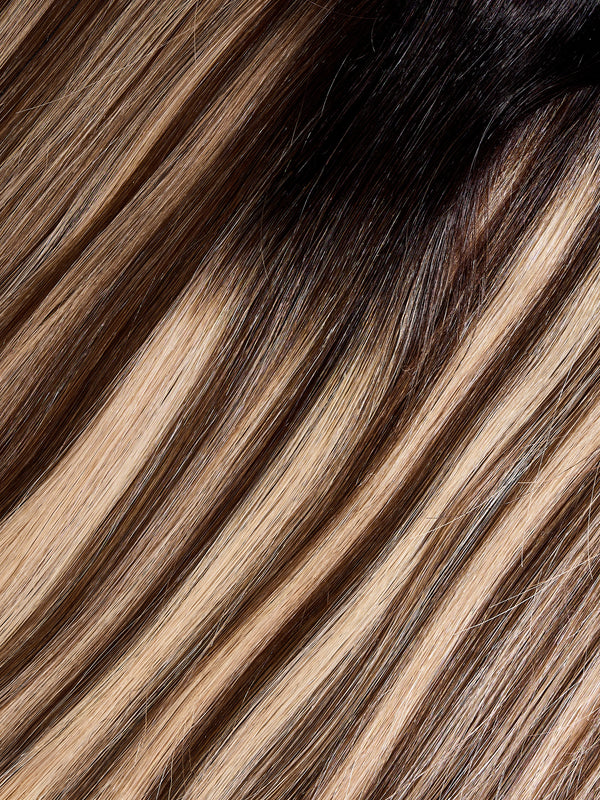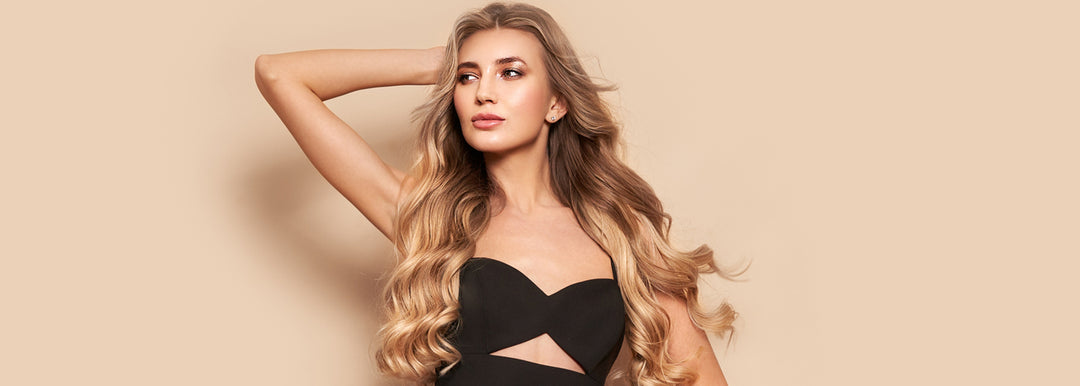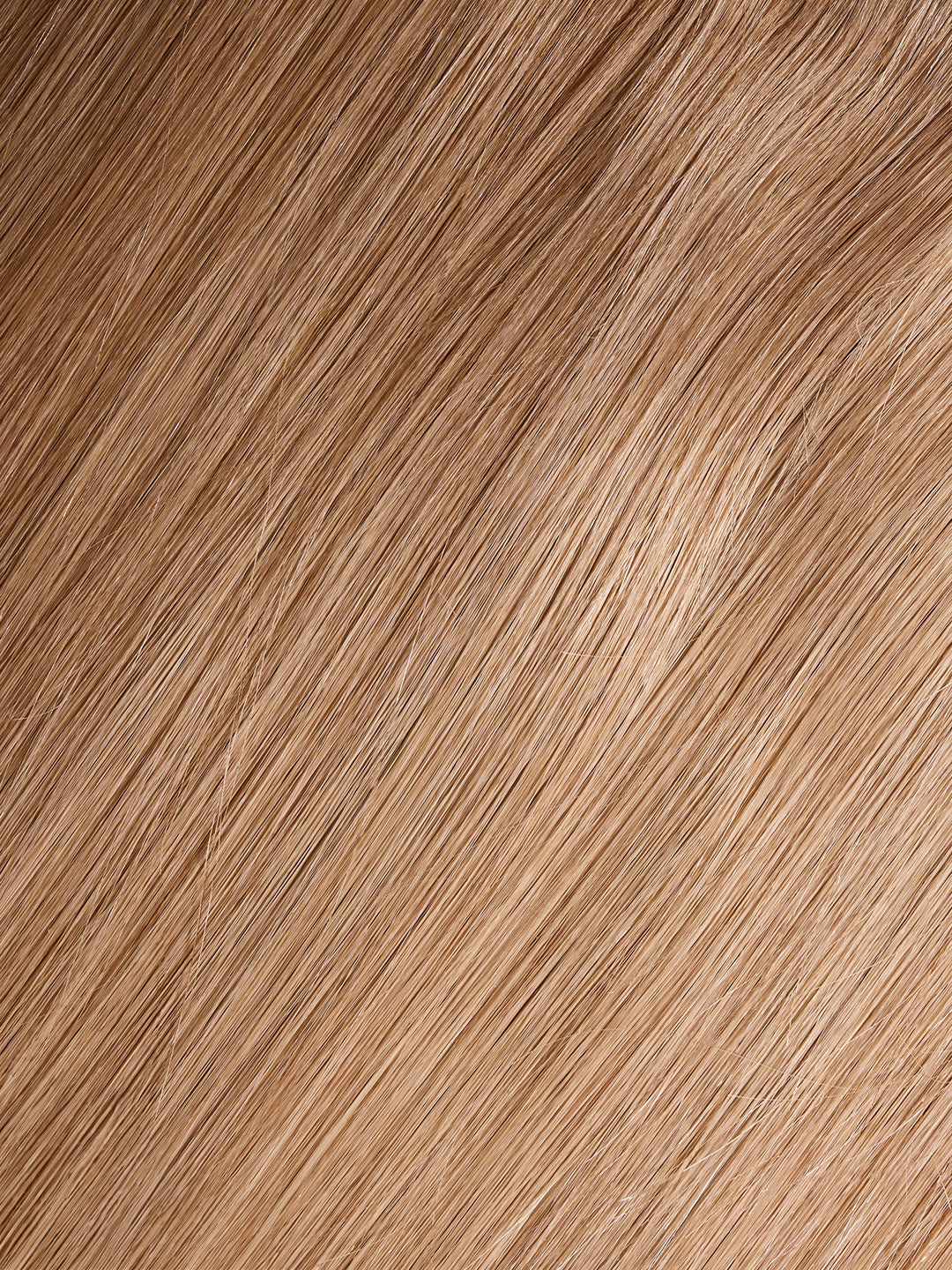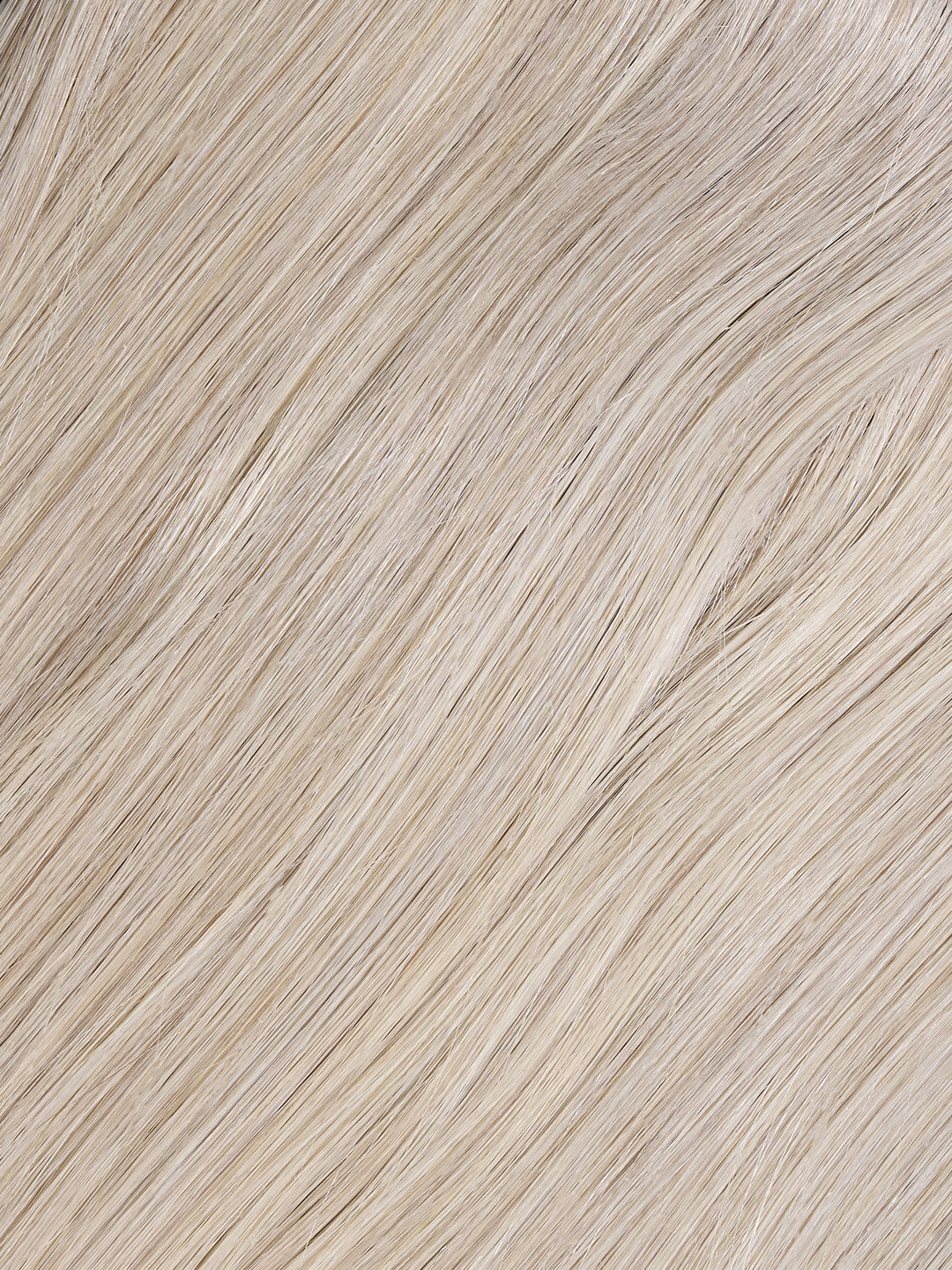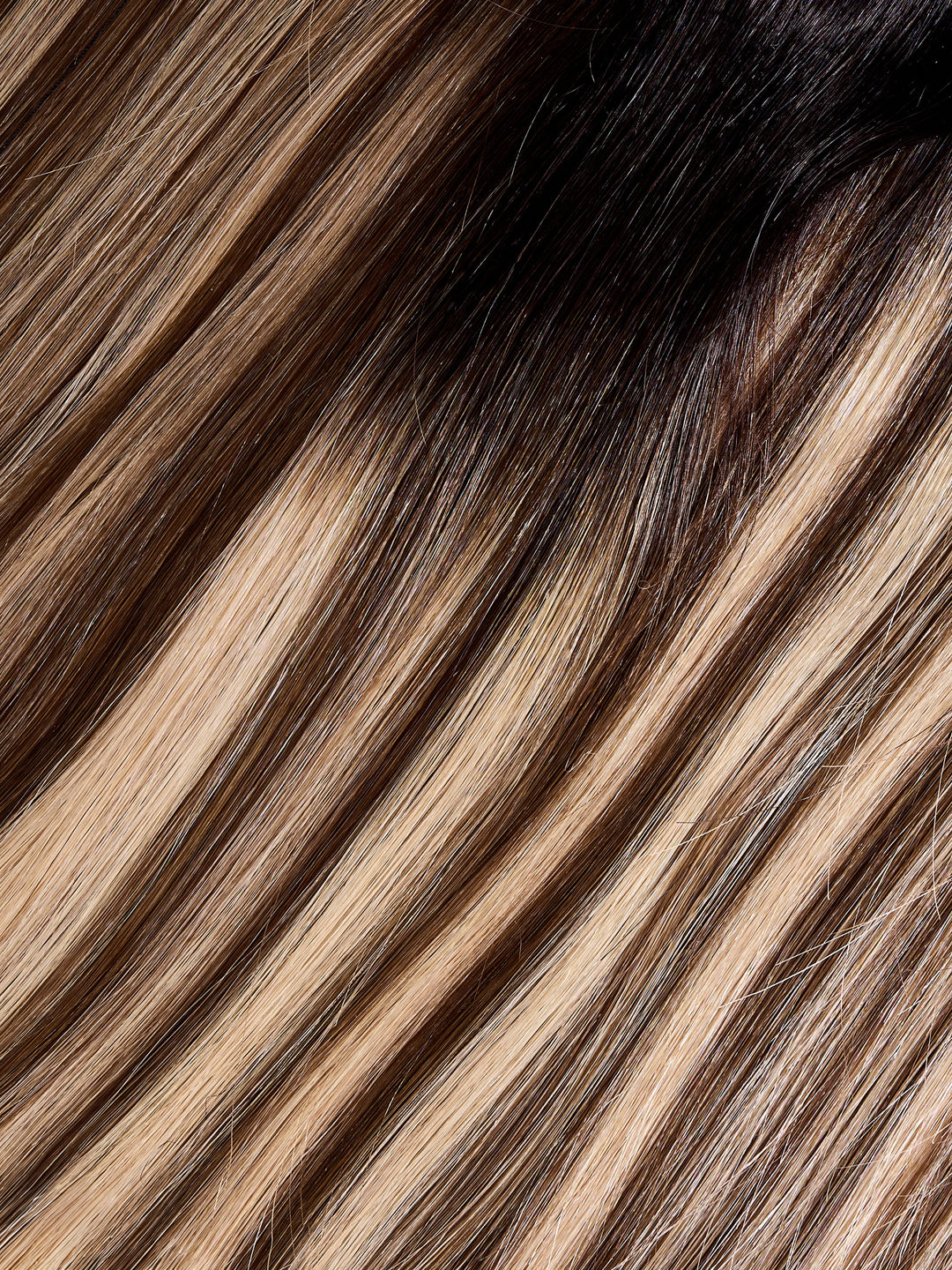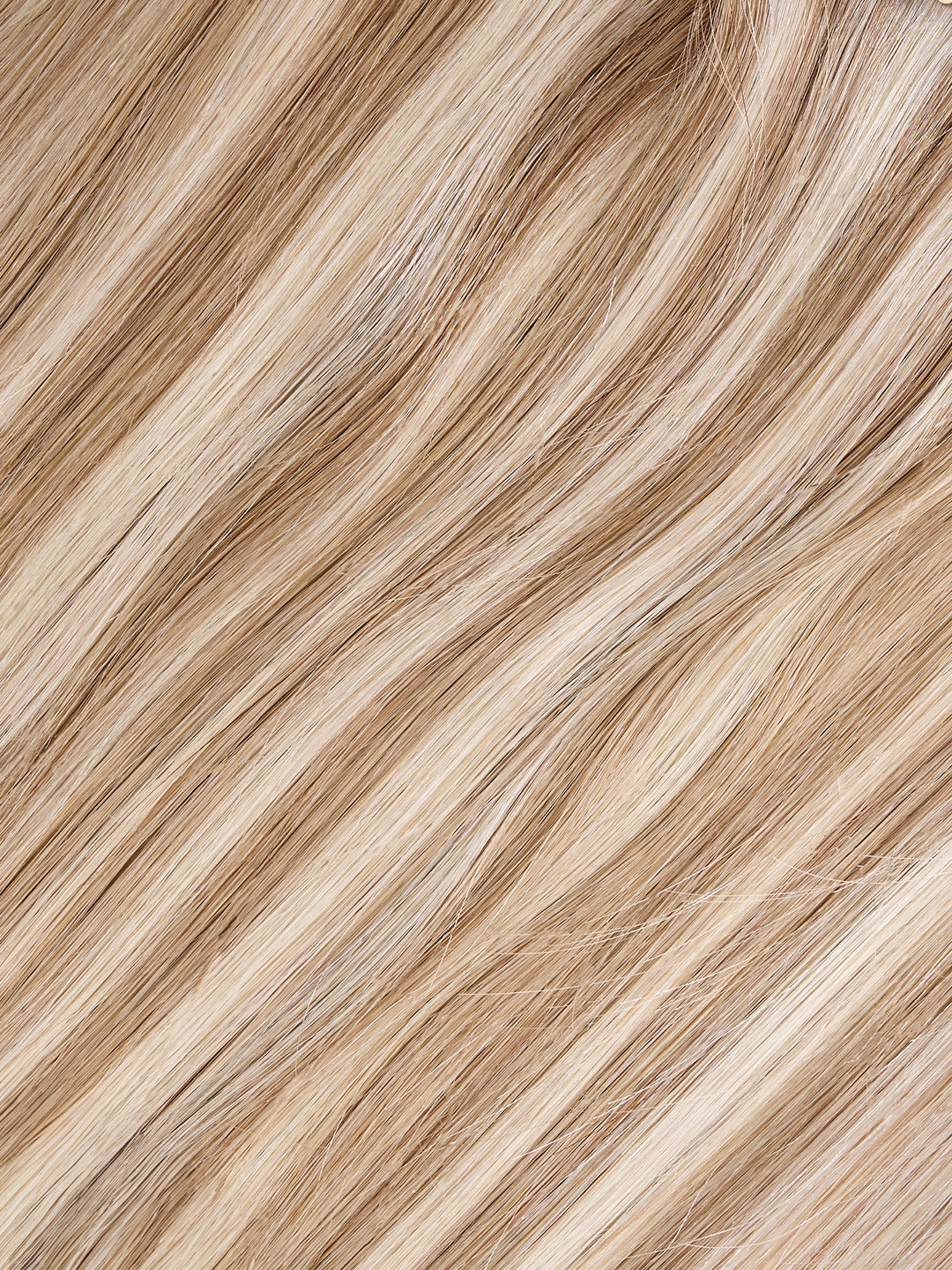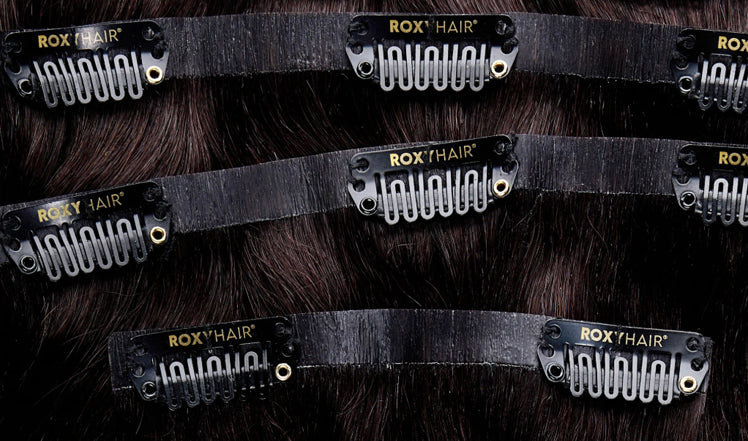Girl, we get hair extensions for one main reason - to look amazing, am I right? We want that gorgeous, full, mermaid-esque mane. But here's the thing, when those extensions don't blend in perfectly with your natural hair, it can be such a bummer.
You know the situation - you splurged on some high-quality extensions expecting to look like a bombshell, but once they're in, they're sticking out like a sore thumb. Instead of that seamless, I-woke-up-like-this vibe, you're left with obvious lines and chunks that scream "extensions!"
It's the worst when something you thought would elevate your natural look ends up doing the opposite. You want your new hair to mesh flawlessly, not stick out like a patch job. But don't stress. If your extensions are lacking that seamless blend, there are totally ways to fix it up. Read on this article to learn more.
Key Takeaways:
-
Blending mismatched extensions is totally possible with the right techniques and products.
-
Properly identifying the issue (color or hair texture mismatch) is the first step to an effective solution.
-
There are different cuts that would help you blend your extensions hair perfectly.
-
Strategic styling with the right products and methods can camouflage and distract from obvious lines of demarcation.
-
An ongoing maintenance routine with trims, toning, and specialized brushing/sleeping habits is key for lasting blend.
-
Sometimes calling in a professional extension stylist is worthwhile for severe mismatches or application issues.
-
Doing your research to select high-quality, properly colored permanent hair extensions matched to your own hair can prevent blending nightmares.
-
Having a few simple blending tricks and hacks in your beauty routine allows you to rock extensions confidently.
-
With some creativity and styling skills, you can achieve amazingly seamless and natural-looking hair extensions.
-
Don't be afraid to experiment until you find the perfect blending solution tailored to your hair.
Common Frustrations When Hair Extensions Don't Blend In

Wearing hair extensions and not blending seamlessly can be frustrating, but there are some common reasons why this happens. First off, everyone's hair is unique - the type, cut, and length all factor in to how well extensions will blend naturally.
For example, if you have lots of layers throughout your hair, you'll likely need to customize your extensions by layering them to match. The weight of the extensions matters too - you need a set that's the right weight for your hair type and length. Picking the incorrect weight is a surefire way for them to look off.
Certain haircuts like lobs or length bob cuts can also make blending extensions trickier since there aren't layers to help camouflage them. The good news is, a little styling effort like layering the extensions can go a long way.
How to Blend Hair Extensions
Every head of hair is unique, and so are the challenges that come with wearing extensions. But don't worry, there's a solution for every hair types issue in blending hair extensions.
For those with Short Hair
You'll need to put in some extra effort, but don't sweat it! Go for extensions with lots of tracks to blend with your short 'do. Have your stylist trim or layer them to match your cute cut. Pick a color that vibes with your ends. Then curl tiny sections of your real hair and the extensions together - that'll be your secret weapon for an undetectable blend!
For those with Thick Hair
First things first, give those extensions a wash! It'll fluff 'em up and make 'em look thicker, which is a game-changer for blending. When clipping them in, position the tracks higher on your head or spread them out more - this seamless look is all about placement. Oh, and braid the bottom section of your hair before clipping in the biggest tracks. Once they're all in, curl random pieces of your hair and the extensions together for an extra seamless finish.
For those with Fine Hair
Don't stress about concealing those clips - just tease your hair first to create a grippy base for the tracks to latch onto. Position those puppies right below your eyebrows, that's the sweet spot to keep 'em hidden. Play around with the track placement until you've nailed the perfect, undectable look. After installing, give your crown a little tease to add height and volume so those extensions blend like a dream.
For the Blunt Bob Hair Cut
You'll want to go for thicker, fuller extensions to complement that cool blunt cut. Then braid the bottom layer of your hair - this'll tuck away any shorter layers for a smooth finish. With the extensions blending into that braid, you'll have gorgeous, flowing locks with no weird lines or pieces sticking out.

Identifying your Extensions Issue
Whether you're new to hair extensions or have been rocking them for years, you know it's not always a perfect, magical experience. Sure, they look amazing and give you gorgeous length and volume. But sometimes, things just don't feel quite right with your extensions. Here are some common issues:
Matching Colors
You're not just talking about blonde vs brown hair - there are so many subtle shades of blonde, brown, and red. If you put two slightly different shades next to each other on your head, it can look really off and inconsistent. A good hairstylist has a trained eye for color and can pick extensions that perfectly match and blend with your hair color.
Matching Textures
Hair extensions come in all sorts of textures, just like regular hair. If you have naturally curly hair and use stick-straight extensions, it's going to look super obvious. And vice versa. Trying to style them to match every day would take forever and probably not even work that well. It's best to get extensions that have a similar texture to your own hair. That way you can just wash and go while the extensions blend in seamlessly.
Getting the Right Length
When you want longer hair, it can be tempting to get the longest extensions possible. But generally, the extensions should only double your natural hair length max. So if your hair is 10 inches long, you could go up to 20 inches with extensions before it starts to look unnatural and overly long.
Using the Right Amount
How many extensions you need depends on what kind of look you want. If you just want to add some volume or fill in some gaps, a few extensions will do. But if you want serious length, you need to use enough extensions so your hair doesn't look stringy or gappy. Too few and it'll have gaps; too many and your head will look weighed down and bulky. Either way, it throws off the blending and looks unnatural.

Cutting Techniques for Hair Extension
It is important to cut hair extensions to put them in a effortless placement on your head. To get them to blend seamlessly with your naturally thick locks, you'll need to use some nifty cutting techniques.
-
Point Cutting
Point cutting is great for blurring those harsh lines where your extensions meet your real hair. Hold the hair at the ends and snip upwards along the hair strands. This helps remove bulk without losing too much length for a natural blend.
-
Slicing and Slithering
Use these techniques to shape the hair around your face or add discrete layers. Slice and slither the shortest top layers to Connect them with the longer extension lengths. Start mid-way down the extensions and gently open and close the scissors down to the tips.
-
Blunt Cutting
After shaping and layering, you might be left with some uneven or whispy ends. If so, blunt cutting is your friend! Just pull the hair forward, secure it between your fingers as a guide, and snip straight across for a sharp, blunt look. Or use that point cutting technique for a softer finish.
Layering Hair Extensions
Layering is a great way to make hair extensions blend with any hair type, and it's especially useful for blending blunt styles like lob or blunt cut. The keys are using multiple extension lengths, good shears, tailoring the layers to your natural hair, and using different cutting techniques in the front and back.
-
Plan the Overall Look: If you want a layered look, start with extensions in varied lengths - like 16", 18", and 20" pieces or 12", 14", and 18". Use the longest pieces at the bottom and stack the shorter ones on top near the face.
-
Invest in Quality Shears Don't even think about using kitchen scissors. You need proper haircutting shears and a razor comb to execute different layering techniques.
-
Customize the Layers Not all layered cuts work for every hair type. Extensions add thickness to fine hair, but the final cut determines how well they blend. For example, soft horizontal layers help keep length on thick hair, while long layers prevent stringiness on finer hair when worn straight. For curly hair, use light layers to create fullness and movement. Keep this in mind when blending shorter hair too.
-
Change Techniques Front to Back The front hairline is usually thinner than the back, so you'll likely need smaller, more precise cuts up front to blend properly. In the back, you can be a bit more aggressive removing bulk and blending away harsh lines.
-
Start Mid-Shaft Focus your initial layering cuts from mid-length down the extensions before detailing and blending the shorter front pieces into the longer lengths.
Shop Roxy Hair
Coloring Tricks your Hair Extensions

Dyeing extensions yourself can be kind of a hassle. If you're not totally sure about your hair coloring skills, taking them to a salon is the safest bet to avoid messing them up. But if you're feeling ambitious and want to save some cash, you can always try coloring them at home. Just know it might not be a total easy task.
The process for going darker is pretty straightforward, just like dyeing regular hair a darker shade. But going lighter is much trickier and not really recommended for extensions. Bleaching or seriously lightening the extensions can mess them up, so it's best to avoid that unless you're using virgin, undyed hair and have guidance from a stylist.
Another key thing - make sure your extensions are actually made from real human hair. Synthetic extensions likely won't take the dye properly. Clip in hair extensions from Foxy Hair® are human hair that can be colored safely.
If you want that trendy ombre look, you can dye just the top part of the extensions a shade or two darker to blend with your roots, keeping the ends lighter.
Once you've got the right extensions and color picked out, just follow the step-by-step dyeing instructions. Things like doing a strand test first, using a low-volume developer, and avoiding too drastic of a color change until you get the hang of it. With some patience and care, you can definitely dye those extensions yourself at home.
Texture Matching
Texture matching is exactly what it sounds like - finding hair extensions with a texture that seamlessly blends with your natural hair texture. When you get it right, it should be almost impossible to tell where your real hair ends and the extensions begin.
It might take some trial and error, but once you nail your perfect texture match, styling will be a breeze and you'll feel confident rocking your extensions.
How to Texture Match Hair Extensions
-
Know Your Hair Structure
First, determine if your natural hair is fine, medium, or thick in texture. This makes a big difference in finding the right match. Fine hair is the most delicate, medium is most common, and thick hair can hold styles longer.
-
Consider Your Typical Style
Think about how you usually wear your hair styled. If you mostly go curly, texture match with your hair wet or product-defined curls intact. That way you can see which extension texture blends with your natural curl pattern. If you have straight hair or very short hair, texture match when your hair is straightened or in its natural short state to find extensions that seamlessly blend.
If you're frequently straightening your hair, then texture match with your hair straight to pick extensions that blend seamlessly when smooth.
Best Extensions for Thin Hair
For fine, thin hair, sleek straight or body wave extensions often work well without overwhelming your natural hair. Curlier textures can work too if you keep the fullness in mind when curly.
Clip-ins and tape-ins are lower-commitment options that don't weigh hair down as much as sew-ins might.
Best for Thick Hair
Those with thick, coarse textures can usually pull off most extension textures, but curly and coily tend to blend especially well.
Straight extensions like relaxed or kinky straight can look amazing too if that's the vibe you're going for with your thick strands.
How to Care for Your Hair Extensions
Even though extensions don't actually grow from your scalp, you still need to take care of them like they're your own hair. After all, you paid good money for those locks, so get your money's worth! The best way to keep your extensions looking their best is to treat them just like you treat your real hair. Here's how:
Replacing Extensions Regularly
Even with great care, you can't wear the same set of extensions forever. A sew-in can typically last 2-3 months max before needing to be replaced, as long as you take proper care of it and visit your stylist regularly for maintenance. When your natural hair has grown out significantly and the extensions are looking raggedy, it's time for a new install.
Most stylists recommend getting new extensions every 6-8 weeks, regardless of length or texture. This helps prevent matting, tangling, and other damage from wearing them too long. Strand-by-strand extensions can potentially last up to 6 months, but they require monthly salon appointments to keep them in good shape.
If you can't commit to that much upkeep, clip-ins are a nice low-maintenance option since you can remove them daily. Just be sure to gently brush out any tangles after wearing and store them properly.
Installing Extensions Correctly
How your extensions are installed makes a huge difference in their longevity. Always have them put in by a professionally trained stylist - poor installation can lead to damage and an even shorter wear time.
If you're new to extensions, consider a service like Foxy Hair® that includes a free professional shade match before your hair purchase.
Washing and Conditioning
You may think you can't wash your hair with extensions, but you absolutely should! Washing regularly (though not as often as your natural hair) keeps your scalp and the wefts clean.
Experts recommend washing extensions every 2 weeks minimum, being very gentle at the roots. Use a sulfate-free, hydrating shampoo and conditioner to keep the hair moisturized since it can't produce natural oils.
Let extensions air dry when possible, and use the cool setting if blow drying. Be sure to use a leave-in conditioner and store them properly between wears.
Other Care Tips
-
Sleep on a silk or satin pillowcase/scarf to prevent dryness and knots
-
Gently brush daily and before/after wearing to prevent matting
-
Use minimal styling products - dry shampoo, shine spray, mousse/gel for curls
-
Avoid heavy creams or products with alcohol that can loosen the install
Conclusion
Let's be real, blending extensions that don't quite match your natural hair can be a whole process. You've got to break out the hot tools to try aligning those textures. Then carefully apply just the right styling products - hydrating yet lightweight - to smooth and define everything into one cohesive look. It's a lot of little tricks to master.
If that all sounds like too much work, Foxy Hair®'s clip-in extension sets could be the seamless solution you need. No fuss, no muss. Just clip 'em in and boom - gorgeous, blended length and volume instantly.
Why not make your life easier and check out our clip-in options? With Foxy Hair®'s extensions, blending is literally that simple.
Frequently Asked Questions (FAQs)
How can I blend extensions with a different texture than my hair?
Use hot tools like flat irons or curling wands to help blend the textures together. If your hair is curly but the extensions are straight, curl the extensions. If the reverse, carefully straighten your natural hair when wearing them.
What if the color doesn't match perfectly?
You may be able to slightly adjust the color with a toner or gloss treatment. But don't go more than a shade or two lighter or darker than your natural hair to avoid damage.
Should I buy extensions in multiple colors to blend?
©†nd from top to bottom when the color doesn't perfectly match your hair.
How do I stop harsh lines from showing?
Careful layering and point cutting can camouflage those lines. Use face-framing pieces of your natural hair to blend with the shortest extension pieces.
What styling products help blend extensions?
Use lightweight mousses, creams and serums rather than heavy waxes or oils. Silicone-based products can smooth different textures together.i8





